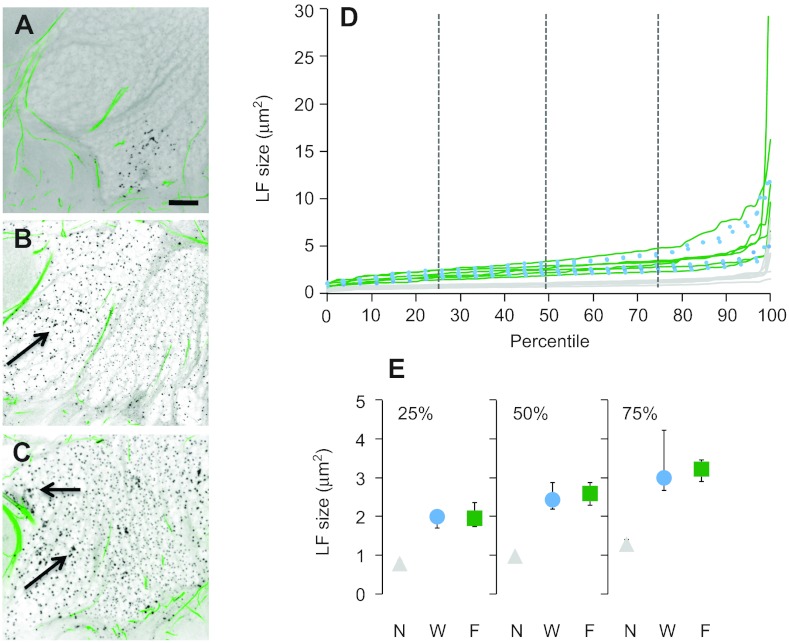Fig. 6.
Lipofuscin (LF) accumulation in the calyx region of the brain was similar in winter and forager bees. (A–C) Projection views of image stacks showing LF fluorescence (arrows) in the lateral calyx region of the mushroom bodies. Representative examples for young control (A), old winter (B) and old forager bees (C; for color scheme and age details, see Fig. 4). (D) Distributions of LF granule sizes for individual winter bees (blue circles), foragers (green lines) and young controls (gray lines). The dashed vertical lines depict quartiles and median values. (E) Potential group differences between the three phenotypes were assessed for small, median and large LF size classes, i.e. for the 25th, 50th and 75th percentile value of each individual (see D). For all size classes, old winter bees (W) were different from young nest bee controls (N), but not from old foragers (F). Medians and quartiles for each phenotype are displayed. For statistical details, see Table 1. Scale bar in A for A–C, 20 μm.

